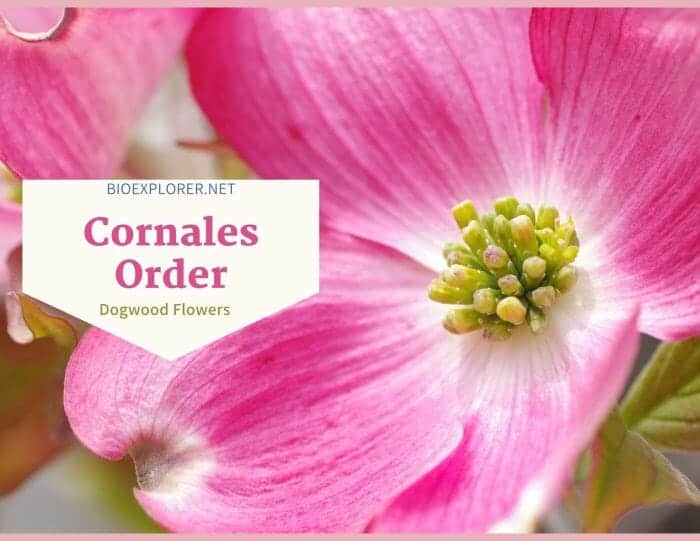
The Dogwood order of flowering plants, Cornales, is basal among asterids. Cornales is relatively small, but members are morphologically diverse and are cosmopolitan in distribution. Cornales plants are mostly woody with simple or compound leaves, small flowers, floral parts in multiples of four, and generally bisexual.
Many of the species of Cornales, like the flowering dogwood and Lindley’s Blazing Star are of ornamental value.
Table of Contents
Cornales Families
Cornales comprises 7 families, 51 genera, and 590 species.[1].
- Cornaceae (Dogwood family)
- Hydrangeaceae (Hydrangea family)
- Curtisiaceae (Cape lancewood family).
- Loasaceae (Stickleaf family)
- Grubbiaceae (Sillyberry family)
- Nyssaceae (Tupelo family)
- Hydrostachyaceae
![]()
Cornales Distribution
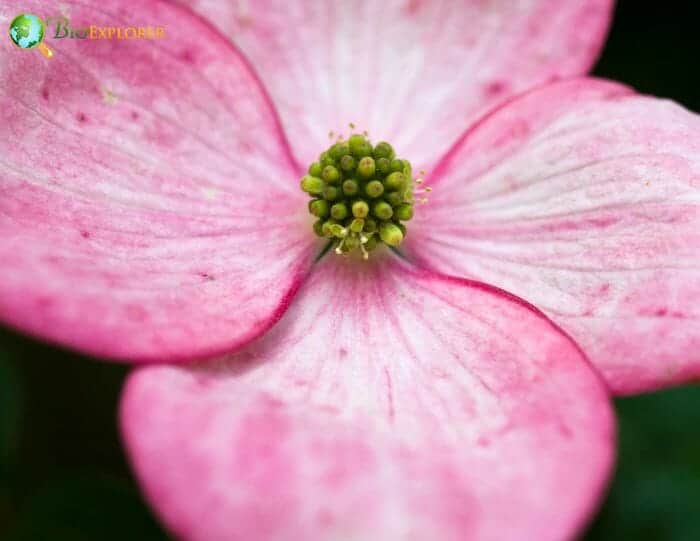
Cornales has a cosmopolitan distribution. They grow from cold temperate to tropical regions. Some species are rarely found in the subarctic zones.
- Cornaceae (2 genera and 85 species) is primarily distributed in northern temperate regions. Hydrangecaea (19 genera and 260 species) is widely distributed in Asia, North America, and southeastern Europe.
- The members of Grubbiaceae (1 genus and 3 species) have a temperate to sub-tropical distribution. The species are found in the Cape floristic region of South Africa.
- The aquatic species of Hydrostachyaceae (1 genus and 20 species) are primarily found in Madagascar and Africa (southern and central). Loasaceae (14-28 genera and 265-300 species) are distributed in Arabia, southwestern Africa, and the Americas.
- The species of Nyssaceae (5 genera and 22 species) are found in eastern North America and Canada. The plants of Curtisiaceae (1 genus and 1 species) grow in South Africa.
![]()
Cornales Characteristics
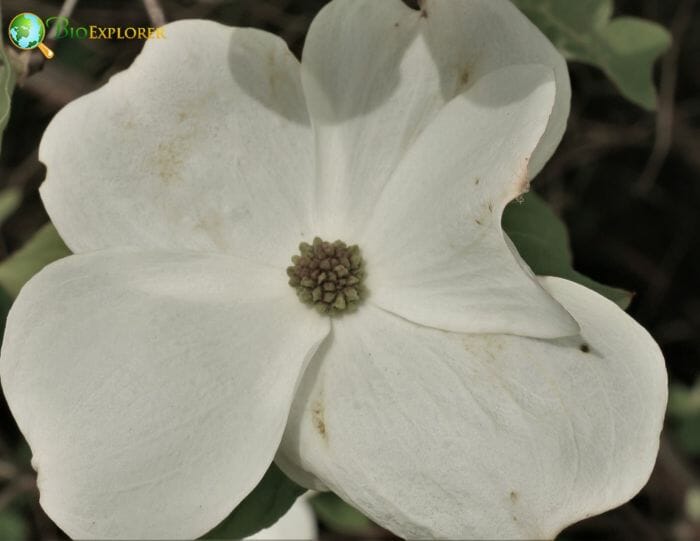
- Plant type: Most members of the Cornales are woody such as trees, shrubs, lianas, rhizomatousWhat is rhizomatous?Bearing rhizomes. Rhizome is an underground stem, with nodes and short to elongate internodes. herbs, and aquatic herbs.
- Stem: The apotracheal parenchyma strands of Cornaceae are relatively long compared with their accepted relatives.
- Leaves: The leaves of the members are simple or compound. Often they are opposite and leathery. The lamina is entire, and the lamina margins are entire or dentate. Most are exstipulateWhat is exstipulate?Without stipules; Stipule is a small structure of appendage found at the base of some leaf petioles..
- Flowers and Inflorescences: The flowers are small, mostly bisexual. They are solitary or in inflorescences of cymose, heads, thyrse, racemes, or cymoids.
- Sepals and Petals: The flower parts of the members belonging to Cornales are in multiples of four. The petals of the flowers are usually free.
- Stamens and Carpels: The stamens are 4 to numerous; alternipetalous, oppositesepalous. The carpels are 1-5. Members usually have disc-shaped nectaries on top of the gynoecia.
- Ovary and Fruit: The ovaries of the flowers are inferior. The fruit is usually a drupe. Others are capsule, berry-like, syncarp, or samara.
- Seeds: The seeds are stony.
![]()
Cornales Flowers and Reproduction
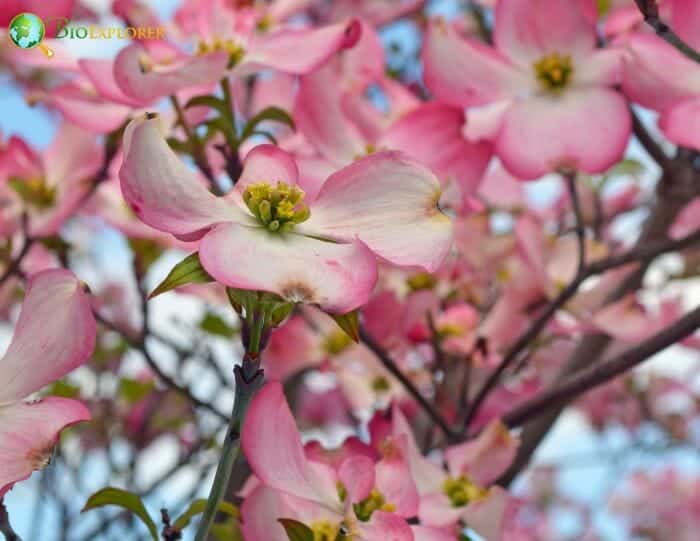
Cornaceae flowers[2] are typically in cymose inflorescence and sometimes in heads. They are actinomorphic, epigynous, and usually bisexual (rarely unisexual). The flowers are showy.
- The biseriate perianth usually has 4 sepals (sometimes 5-7 or 0) and 4-5 imbricate petals. In addition, there are 4-5, commonly alternipetalous, stamens. Cornaceae possess syncarpousWhat is syncarpous?Having united carpels. Contrast apocarpous. gynoecium, having inferior ovary, and commonly 2-4 carpels.
- The flowers possess an intrastaminal annual disc. The flowers attract insects like beetles, bees, butterflies, and flies. A generalized pollination system[3] appears to occur in Cornus.
- The Loasaceae flowers[4] are attractive in red, orange, yellow, or white. Inflorescences are usually thyrsoids, sometimes in solitary, rarely cymoids (monochasial or dichasial), and very rarely in racemes or heads. They are hermaphrodite and actinomorphic.
- The flowers have well-developed sepals that are sometimes larger than the petals. The stamens are 5-150; antesepalous. The ovary is syncarpous and hypogynous, with 3-5 carpels.
- Aside from the very painful stinging hairs of the plants, the floral morphology of the Loasaceae is often intricate. For example, the genus Loasa has strangely formed flowers with 5 yellow petals shaped like a pouch.
- These petals cover the stamens and unique large colored nectaries of the flowers. The C. lateritia also have pouch-like petals in red-orange clusters.
- Pollination in Loasaceae is via insects, usually by bees. Other species are pollinated by hummingbirds. In addition, there is evidence of rodent pollination[5] in some species.
- Nyssaceae[6] flowers are small in solitary or aggregated in inflorescences of racemes, or heads, or umbels. The plants can be monoeciousWhat is monoecious?Pertaining to plants, individuals of which bear both staminate and pistillate flowers, but not necessarily perfect flowers., dioeciousWhat is dioecious?Pertaining to plants, individuals of which bear either staminate or pistillate flowers, but not both., or polygamonoecious. The sepals in male flowers are minute and toothed (or are reduced to toothed rim).
- The female flowers possess sepals on a floral cup situated above the ovary. Petals of the flowers can be 5 or more; free. Some flowers lack petals.
- The stamens can be isomerous, or twice as many (or more) as the petals. The carpel is 1-2, and the ovary is inferior. The tupelo[7] trees produce nectars that attract pollinators.
![]()
Cornales Family differences
Cornaceae
- Members of this family are trees, shrubs, and stoloniferous subshrubs.
- The leaves are spiral or two-ranked. The lamina vernation of the plants is conduplicate, curved, or involute.
- The flowers are small and showy, with 4 sepals and 4-5 imbricate petals.
- The flowers are usually bisexual and rarely unisexual.
- The flowers have 4-5 stamens; alternipetalous.
- Members of this family have 2-4 carpels. The ovary is inferior.
- The fruit is a drupe; 1-2 seeded.
![]()
Hydrangeaceae
- Most members are shrubs or herbaceous vines. The leaves are large, simple, and in opposite arrangement.
- The flowers are bisexual.
- The flowers are showy in a large cluster of blooms in a star shape. The Hydrangeaceae flowers may be clustered in the shapes of mopheads, lacecaps, or panicles.
- The sepals of the flowers are 4-10 (fused). The petals are 4-5 (rarely 10); separate.
- The stamens are 4 to numerous.
- The members possess inferior ovaries and usually 4 united carpels.
- The fruit of hydrangea plants is a capsule, sometimes berry-like. Their seeds are often winged.
![]()
Curtisiaceae
- Members of this family are trees. The leaves are opposite, simple, and leathery. The lamina is entire, and the margins are coarsely dentate. The leaves are exstipulate.
- The flowers are minute and in the aggregated inflorescence of panicles or thyrses.
- The perianth is 8 in two whorls. There are 4 sepals in the calyxWhat is calyx?A collective term for all the sepals of a flower; the lowermost whorl of floral orgrans (Plural form is calyces). (1 whorl) and 4 petals in the corollaWhat is corolla?A collective term referring to the petals of a flower. (1 whorl).
- There are 4 stamens, alternating with the corolla members (oppositesepalous).
- The members have 4 carpels, and the ovary is inferior. The placentation is apical.
- The fruit is a drupe with 4 seeds.
![]()
Loasaceae
- This family involves annual, biennial, or perennial herbs, winding, subshrubs, woody lianas, and cushion-forming plants.
- The leaves are simple or compound. Commonly, the leaves are opposite below and alternate above.
- Flowers can be solitary or in inflorescences of thyrsi, cymoids (monochasial or dichasial), racemes, or heads.
- The flowers are hermaphrodites.
- The flowers can be (4-)5(-8)merous with sepals sometimes larger than the petals.
- Flowers have 5-150 stamens.
- There are 3-5 carpels. The ovary is hypogynous and syncarpous.
- The fruit is commonly a capsule with many seeds.
![]()
Grubbiaceae
- Members are evergreen ericoid shrubs. The leaves are slender, opposite, and leathery.
- The flowers are tiny, hermaphrodite, and sessile.
- The flowers possess 8 stamens; 4 longer and 4 shorter.
- The ovary is inferior.
- The fruit is a syncarp, and the seed is an ovoid.
![]()
Nyssaceae
- Members are primarily trees. Some are shrubs.
- The leaves are simple and alternate. The lamina is entire; pinnately veined. The lamina margins are entire or dentate. The leaves are exstipulate.
- The flowers are solitary or aggregated in racemes, heads, or umbels.
- The plants of Cornales are monoecious, dioecious, or polygamomonoecious.
- There are 5 sepals (toothed or indistinct) in the calyx and 4-8 petals (small) in the corolla.
- The flowers have 8-15 stamens; isomerous to diplostemonous with the perianth.
- There are 1-2 carpels, and the ovary is inferior.
- The fruit is drupe or samara. There is only 1 seed per fruit.
![]()
Hydrostachyaceae
- Members are aquatic herbs. The leaves are sometimes floating. They form rosettes possessing scaly or fringed appendages. Usually, the leaves are pinnately compound.
- The flowers are very small in a spike inflorescence.
- The flowers are unisexual.
- Male flowers only have 1 stamen.
- The flower has 2 carpels.
- The fruit is a capsule (enclosed by a bract), and the seeds are tiny and many.
![]()
Cornales Example Species
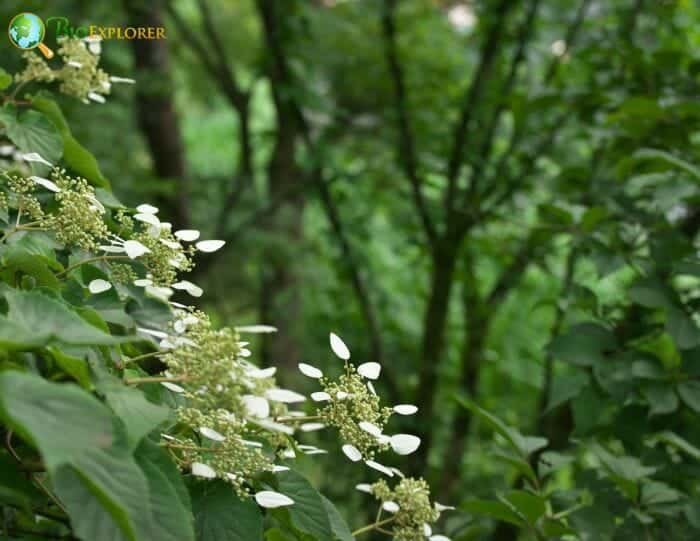
Many of the species of Cornales are of ornamental value. Others are utilized for medicinal use.
The following are the beneficial members of this order:
- Cornelian cherry dogwood – The fruit of this plant is edible. Sometimes, it is used for distilling vodka. The species is also used as an ornamental plant, and the wood is used for crafting into machine parts, tool handles, etc.
- Flowering dogwood – The tree is usually used as an ornamental plant.
- Cape lancewood – The species is used as an ornamental tree. The bark of this tree is utilized for traditional African medicine.
- Japanese climbing hydrangea – The species is used as an ornamental plant.
- Silverleaf hydrangea – This attractive plant is used for landscaping.
- Hydrostachys flabellifera – The species is used as traditional medicine.
- Lindley’s blazingstar – The species is cultivated as an ornamental plant.
- Dove tree – The species is used as an ornamental tree. It also has potential for medicinal use.
- Happy tree – The species has medicinal value.
- Sage-leaved alangium – The tree has medicinal uses. Wood is used in making furniture and musical instruments.
![]()











